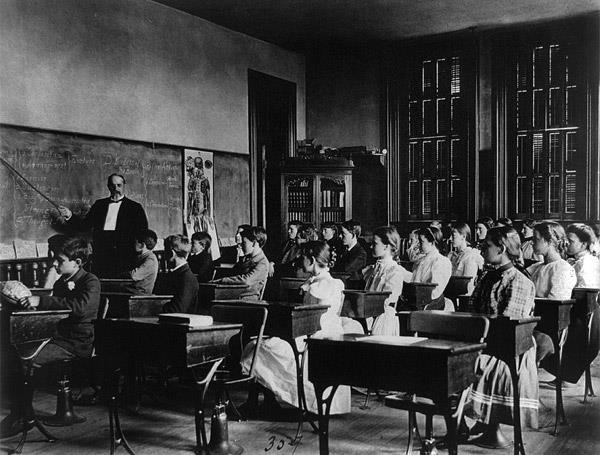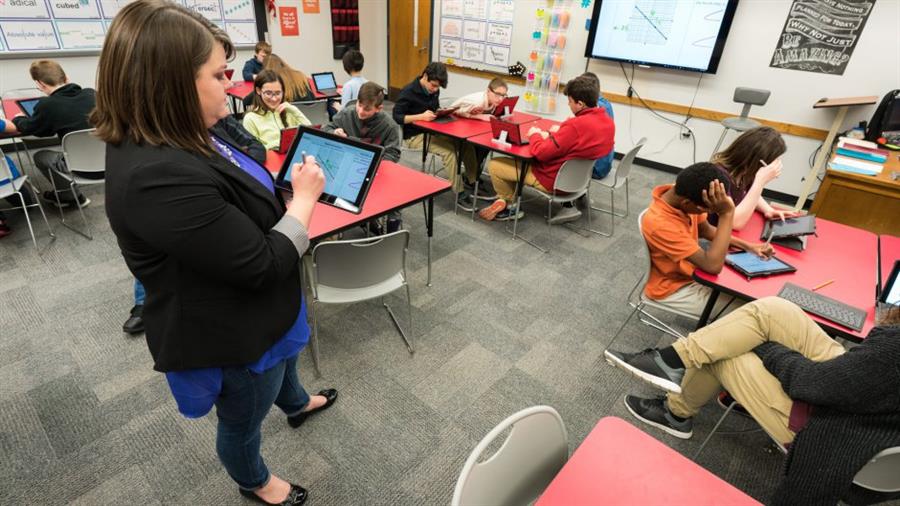Traditional and modern teaching methods
Education and classroom
The word classroom, evokes desks and chairs and a place for the teacher who transfers his/her knowledge to the students. Even the emergence of the modern education with the institution of schools, colleges and universities has not altered this structure much. Traditional schools were comprised of rooms and halls in which students sat in order and listened to the teacher's teachings, followed the given instructions and completed the homework assignments. This function has not changed operationally in the past century. Only the buildings have modernised, the stationary are classier and more advanced, and the storage of knowledge and information has advanced from analog into digital forms.

The teacher-centered classroom: The oldest educational method
The most traditional teaching method, is the teacher-centered method. In this method, the teacher is the captain of the class. As a captain, the teacher determines the lesson plan, and is the central character in class. The teacher is also the main source of knowledge in class, who makes the final decision on teaching methods, homework assignments and the validity of opinions and answers. Thus, a traditional teacher-centered educational environment is a autocratic work environment.

A teacher-centered method has lasted for so long and is still carried on in colleges and universities. Of course, the modern form of this method is not so autocratic, but the teacher remains to be the main source of knowledge, so the teacher's role in planning and directing the class activities is one hundred percent.

In such environments, the teachers are totally responsible for the class materials and lesson plans and methods of student presentations and student learnings. This method is currently facilitated by experienced and energetic teachers with demonstrative skills and active student feedbacks. However, it is still a one-way method.
A modern revolution: the student-centered method
This educational method as one of the revolutions of our generation, was first used in Northern European countries such as Finland. This method is often used for younger students and children. Elementary and middle-school students search, explore, participate, cooperate and interact with their teachers to gain new insights. student-centered teaching methods are quite fun and exciting for children and juveniles. In student-centered teaching methods, the teacher facilitates the learnings by preparing the required conditions and tools, and paves the way for the modern educational experience.

The student-centered education attracts the students and gives freedom to the instructors. In this method, achieving the goals and teaching standards are not considered and time limitation is not an issue. If an educational group seeks certain objectives for its students, and wishes to achieve them with the least time and cost, then it has nothing to do with the student-centered teaching method.

Interactive education: The most modern educational method
We discussed the teacher-centered and student-centered teaching methods so far. These two method are at the two ends of the teaching method spectrum. The teacher-centered method is very organized and purposeful, aiming to achieve certain learning goals at the least possible time and cost. This method may appear boring or fun and illustrative. Either way, the learning goals are preplanned.
On the other end of this spectrum, we looked at the student-centered method which does not have any pre-specified academic learning goals, but its main objective is that the students become able to learn themselves and to build up their problem-solving skills.

Between these two methods there is a wide range of teaching methods consisting of various mixtures of teacher-centered and student-centered methods, known as interactive teaching. The distinction of interactive methods lies in the amount of teacher's role and control in directing class activities. For example one interactive method would be that the teacher organizes the class materials and sets the goals of each class session beforehand, but the students learn and achieve by exploration, innovation and teamwork.
Another example of interactive teaching is that the teacher organizes the class material and sets the goals of the whole course in advance but leaves the direction that each class takes or the class advancement to the students. Another type of interactive teaching is that the teacher sets the objectives and outputs of the course and the students have to develop all teaching resources and lesson plans. In this case, the teacher is ultimately responsible for the time, budget, and final output of the course.
Interactive classroom teaching with Wiztut whiteboard
All of the various kinds of interactive teaching share a common factor in that the role of the teacher is distinct from that of the student, being more supervisory in nature. In all methods of interactive teaching, the teacher manages the class, and the students are the followers.
The Wiztut interactive teaching method switches the position of the teacher from the front of the class to amongst the students. In this method the teaching resources and material are seemingly created or gathered through the interaction with and collaboration of the students. Of course, advanced notice of the topic to be covered in a lesson allows the students to do their research and preparation work before their lesson.

During the lesson, the teacher plays the role of an informed student and leads the other students. The teacher also has his/her share in facilitating and coordinating the teaching activities in the classroom while mingling with the students. However, in running the show, and in the process of collecting, reviewing, evaluating, recording and auditing the information, the teacher tries to let the students be in the driving seat.
In a modern classroom, where the smart whiteboard is presently the first choice, if instead we use the Wiztut online whiteboard, then the teacher and the students can collaborate together in realtime. In this setup the Wiztut whiteboard is projected onto the main board in front of the class, and then other linked Wiztut whiteboards are opened on one or more laptops or tablets which are given to people in the classroom. This way students and teacher can cast their thoughts and suggestions directly onto the main board in the classroom and actively and efficiently participate in learning without having to leave their seats. Of course in this collaborative learning the main role of teachers is to make sure that their final course objectives are achieved.

A Wiztut interactive lesson can take place online, on-site, or a mixture of the two. For example, some students can physically attend a lesson in a classroom while others may attend the same lesson online. The teacher can either be present in the class or be online. In Wiztut interactive classes, we anticipate that the main teacher will be physically present in the classroom while other teachers or experts may be invited to participate online.




